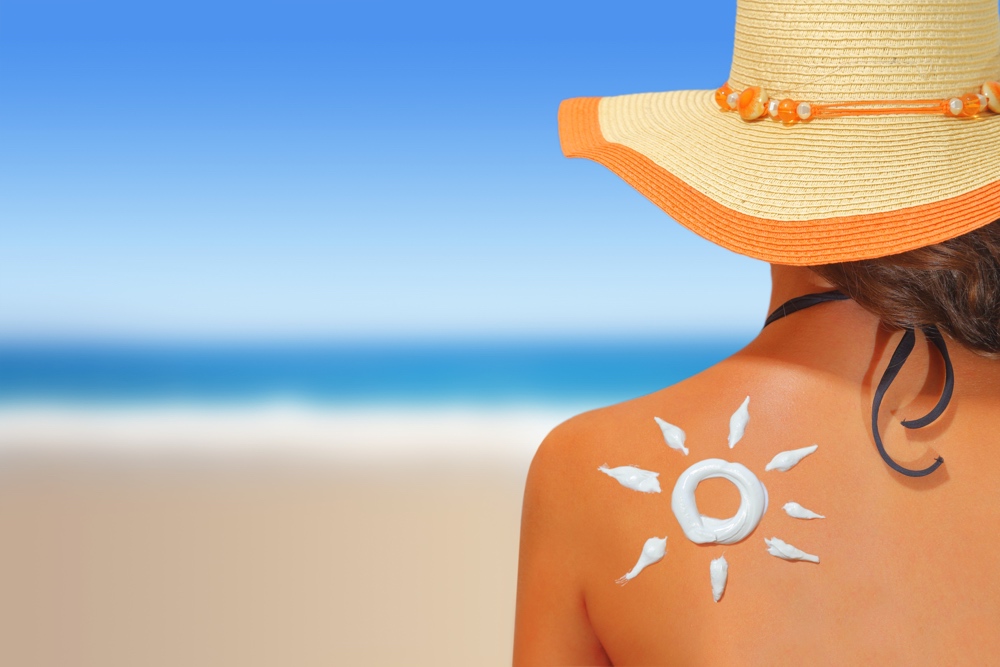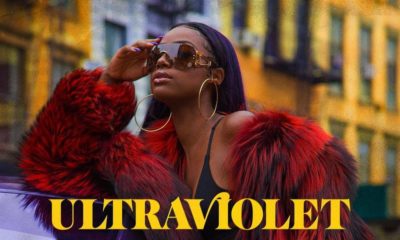Features
Hilary Says: The Importance Of Sun Protection
The rays from the sun make us feel good but they are highly destructive. Sun exposure causes most of the skin changes that we think of as a normal part of aging. Over time, the sun’s Ultraviolet (UV) Light damages the fibers in the skin called Elastin. When these fibers break down, the skin begins to sag, stretch, and lose its ability to go back into place after stretching. By damaging the skin’s cellular DNA, excessive UV radiation produces genetic mutations that can lead to skin cancer.
UV radiation is part of the electromagnetic (light) spectrum that reaches the earth from the sun. It has wavelengths shorter than visible light, making it invisible to the naked eye. These wavelengths are classified as UVA, UVB, or UVC. Most UVC is absorbed by the ozone layer and does not reach the earth (thankfully), but we have to deal with UVA and UVB rays.
UVA Rays
Also known as Ageing Rays, emit long wave ultraviolet radiation and represent about 95% of the radiation that reaches the earth. They are present with relatively equal intensity during all daylight hours, all year long, in any climate and weather condition, and can penetrate through clouds and windows. That is why, even though they are weaker than UVB rays they actually cause more damage.
UVA, which penetrates the skin more deeply than UVB, has long been known to play a major part in skin aging and wrinkling (photoaging). Studies show that UVA damages skin cells called keratinocytes in the basal layer of the epidermis, where most skin cancers occur. UVA contributes to and may even initiate the development of skin cancers. They also decrease elastin, the substance that gives skin its structure and elasticity.
UVB Rays
Also known as Burning Rays, cause painful skin reddening and sunburn. It tends to damage the superficial epidermal layer (thin top layer of the skin). UVB rays emit medium wave ultraviolet radiation and only about 5% of it reaches our planet. This is because part of them are absorbed by the clouds and the other part by the ozone layer. They are stronger between 10a.m and 4 p.m.
Although less numerous than UVA rays, they are more powerful and can still cause a lot of damage. Unlike UVA rays, this damage is instantly visible as it is the UVB rays that cause sunburn. In addition, they also cause abnormal cell mutations and growth pattern and can cause skin cancer.
Natural SPF in Dark Skin
Many people think “dark skin has an inbuilt SPF so sunscreen is not necessary” – It would be great if that were true, but sadly, it’s just a myth. Darker skin does have a higher natural SPF (Sun Protection Factor)than fair skin due to increased amounts of protective melanin in it, but that doesn’t mean it isn’t prone to wrinkles, hyperpigmentation and skin cancer.
Dark skin really has an “inbuilt” SPF of between 8 and 16 (depending on how dark it is), which protects it from some of the damage caused by UV rays.
The problem is that SPF 15 only filters about 92% of UVB rays. That’s a high percentage and it may seem enough to provide adequate protection, but the rays that get through the skin will, overtime, cause dark spots, premature aging, and even cancer. Dark skin is not as sun-resistant as we think it is, it can get sunburned too, but it is harder to detect because dark skin rarely turns red.
Sun Protection
The use of sunscreen is very important to help protect us from the damaging effects of UV Rays. The efficacy of a sunscreen is measured by its “Sun Protection Factor” (SPF). SPF indicates how long it will take for UVB rays to redden/burn your skin when using a sunscreen, compared to how long skin would take to redden without the product.
For example, if SPF 15 is being used, then it should take a person who naturally burns in 10 minutes without sunscreen, 2 hours 30 minutes (15 x 10 = 150 minutes) to burn. So if you would burn in 10 minutes naturally, you should reapply SPF 15 every 2 hours 30 minutes.
The problem with high SPF products is that, yes, an SPF 70 product will block the sun for 700 minutes but ONLY if the product remains in a continuous film on the skin that long; which is very unlikely if you are sweating. You’re better of with a lower SPF product (like SPF 30) applied more often.
A good sunscreen should provide both UVA and UVB protection so look out for “Broad Spectrum” on the packaging. Because UVA rays of daylight are present year-round and come through windows, it is important to know that even if you’re indoors or driving in your car, you will not be protected from this type of UV light if you’re not wearing sunscreen.
There are two types of sunscreen ingredients: Chemical Blockers and Physical Blockers.
Chemical sunscreens work forming a thin, protective film on the surface of the skin and absorb the UV radiation before it penetrates the skin (E.g., Octinoxate and Oxybenzone).
Physical sunscreens are insoluble particles that form a physical shield that deflects UV rays away from the skin (E.g., Titanium Dioxide and Zinc Oxide). The physical sunscreens usually make the formulation white which gives many dark skinned people a grey/ashy look. Most sunscreens contain a mixture of chemical and physical sunscreens.
Photo Credits: Dreamstime


























